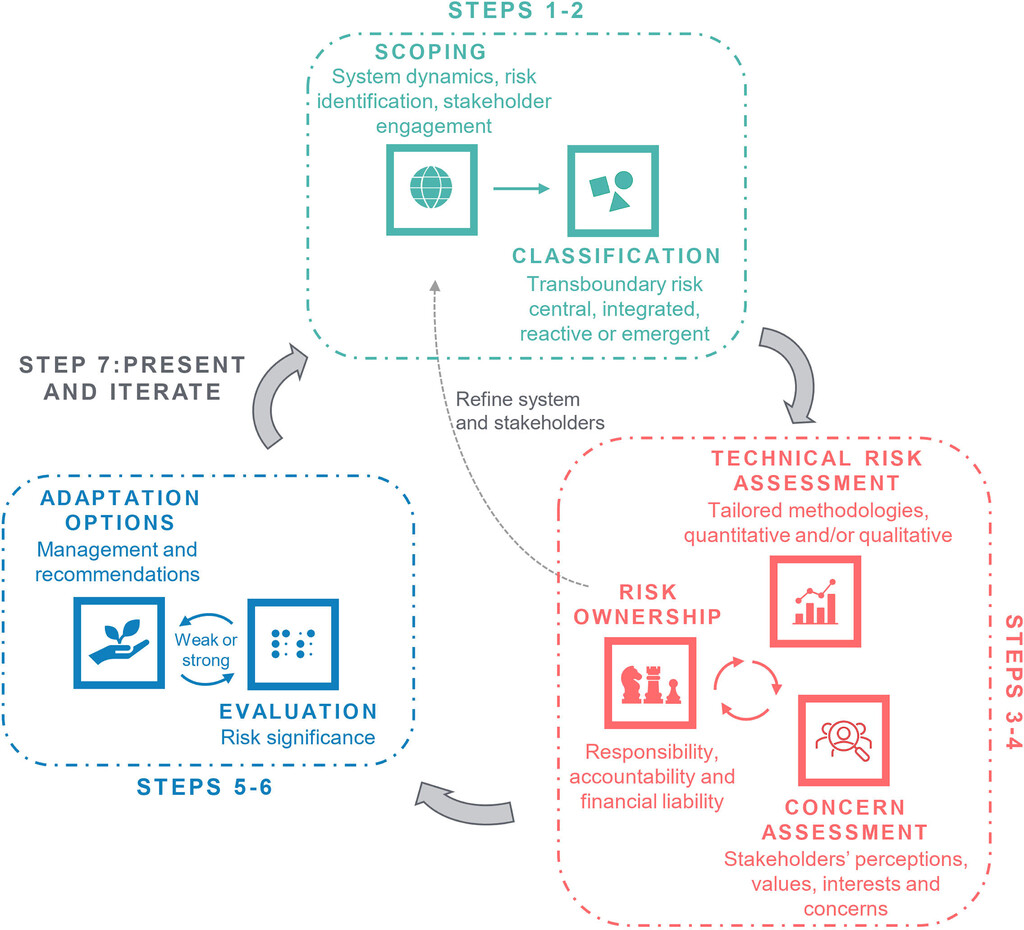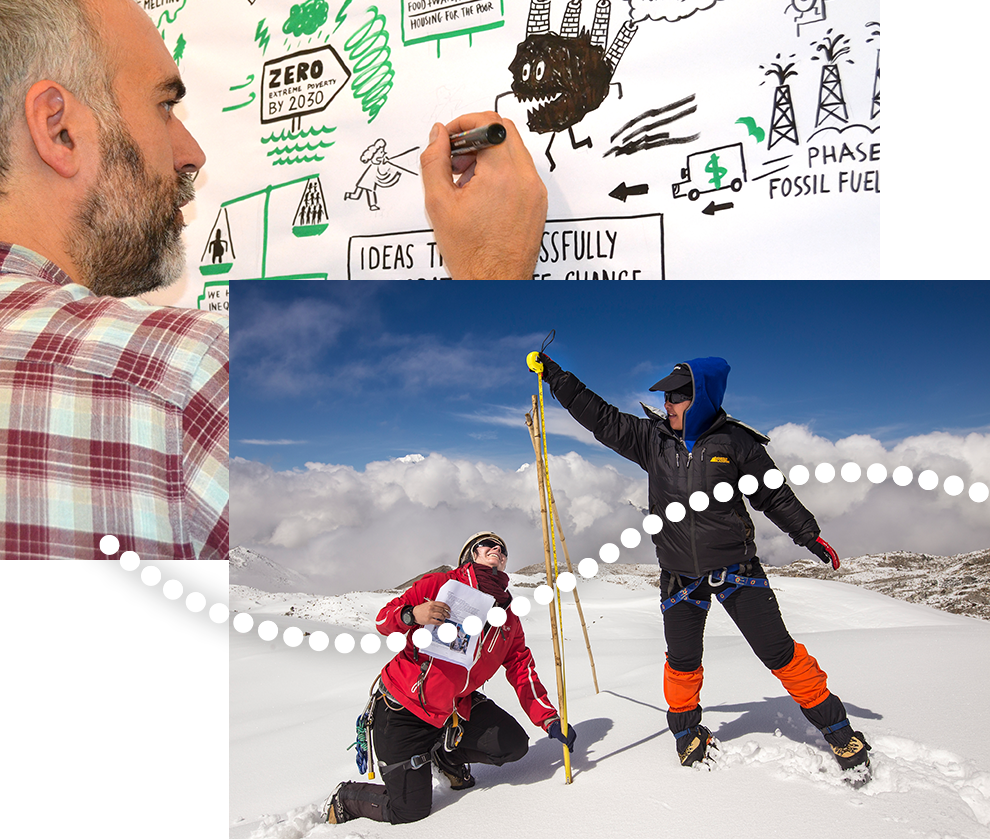Rising to a New Challenge: A Protocol for Case-Study Research on Transboundary Climate Risk

Summary
Recent research has highlighted that adaptation tends to focus exclusively on the local and direct impacts of climate change and misses the crucial dimension of transboundary climate risk, which all countries are likely to face, irrespective of their level of development. The cross-border nature of climate risk has often been overlooked in existing risk assessment frameworks and underexplored in adaptation case studies. This creates a “vicious cycle” where fewer attempts are made to analyze these types of risk, leading to a further dearth in understanding of their scale or significance. Society is thus left exposed to, and underprepared for, the full range of threats that climate change poses.
This paper aims to provide an initial contribution to break this cycle. It proposes a protocol to help researchers identify how their case studies can incorporate an analysis of transboundary climate risk, thereby supporting more holistic, effective, and just approaches to adaptation.
This article is an abridged version of the original text, which can be downloaded from the right-hand column. Please access the original text for more detail, research purposes, full references, or to quote text.
Transboundary climate risk: The state of knowledge
Transboundary climate risks are distinct in many respects from the direct climate risks that usually form the focus of case-study research for adaptation. These characteristics affect the capability, motivation, and opportunity of stakeholders – including case-study researchers – to identify them, understand and assess their drivers, and appraise options for their effective management through adaptation plans and actions.
Capability
Conceptual and empirical research in the field of transboundary climate risk is complicated by a lack of a common terminology and high levels of complexity, ambiguity and uncertainty, which characterize these types of risks. This undermines both the capability of researchers to assess them and of policy makers and planners to effectively manage them. However, it is these traits that arguably make case-study research all the more necessary.
Motivation and opportunity
While there is a clear motivation for adaptation planners and implementers to understand the direct climate risks that originate in their jurisdictions, this is markedly different in the context of transboundary climate risks, which originate (by definition) beyond a local or national policy makers’ gaze and where the question of “risk ownership” becomes much more significant but complex.
The lack of clear ownership means there is no one to push for research on adaptation to transboundary climate risk. In light of the difficulties in “downscaling” transboundary climate risks – to the extent that effective adaptation responses can be developed at a subnational level – there are few opportunities for local authorities, the actors most frequently charged with adaptation responsibilities, to manage them.
A protocol for case-study research on transboundary climate risk
This protocol builds on key components of the impact chain framework, which aims to support researchers to “understand, systemise and prioritise the factors that drive risk in the system of concern” according to Zebisch et al. (see section 3 in the original text for more detail).
But it also adapts and applies new perspectives to support the assessment of transboundary climate risks in ways that acknowledge their systemic nature and puts questions of ownership at the heart of risk analysis and response.
Listed below are the seven stages of a protocol for incorporating transboundary climate risk in case-study research for adaptation. For a synthesis of these steps, see Fig. 2 in the original text.
1. Scoping
This stage supports researchers to lay the groundwork for a focused and impactful case study by developing a preliminary understanding of the dynamics of the system of concern to identify one or more transboundary climate risks.
The steps outlined in the impact chain framework provide an essential starting point but to these we add a number of exploratory research questions within five key areas:
- Defining and characterizing the system of concern and the boundaries within which the framework for assessing transboundary climate risk should be applied.
- Identifying key actors within the system (and influencing the system) and the relationships between them.
- Scoping possible impacts of climate change on system components.
- Identifying and selecting transboundary climate risks, based on their likely significance or feasibility of assessment.
- Considering risk ownership [the roles and responsibilities of actors identified in (ii)].
2. Classification
This stage encourages researchers to classify where in a proposed matrix their case study sits. Figure 3 in the original text outlines this matrix and facilitates the categorization of case studies into an A–D typology.
3. Assessment
This stage guides researchers through two distinct stages of an assessment of transboundary climate risk: a technical risk assessment and a “concern assessment” of stakeholders’ views and interests with regard to the risk.
4. Risk ownership
This stage supports researchers to identify the allocation or distribution of “ownership” of the transboundary climate risks revealed. Young et al. propose three research questions to consider in light of the transboundary climate risks revealed: “Who pays for the risk, who manages (is responsible for) the risk [and] who is accountable for the risk?” We advise researchers to map the actors involved in the case-study system, and others’ spheres of influence on the system, in the above three capacities and the governance arrangements that outline and define such protocols.
5. Evaluation
This stage supports researchers to evaluate the significance of the transboundary climate risks revealed. Researchers may first consider a relatively simple characterization of the risk(s) while approaches to evaluate the risk will depend to a great extent on the methodologies employed to measure the risk. These can range from complex quantitative calculations to simple qualitative ratings based on the perceived fragility or resilience of the system to withstand the disruption that the risk represents.
6. Adaptation options
This stage supports researchers to explore how the risk is managed (if at all), appraise the extent to which the owners of the risk are in a position to implement measures to manage its effects, and potentially generate adaptation options and recommendations.
7. Presentation and iteration
This stage supports researchers to present their case study. An emphasis is placed on conveying research in accessible and communicable ways to the actors of concern. We also encourage researchers to, where possible, iterate the steps of the protocol for a more rigorous approach.
Conclusion
There is clearly a need to go beyond assessment frameworks that have evolved on the assumption that all climate impacts are local. The impact chain framework takes a step in this direction; it is hoped that the protocol introduced here advances us further.
Its challenges and limitations – particularly as a decision-support tool – are acknowledged: we do not (currently) have well-established quantitative methods that could drive and assure credible and comparable assessments of transboundary climate risks. But if we continue to apply a territorial approach to case-study research for adaptation we will fail to develop responses that adequately reduce the full range of climate risks facing society in a globalized world

Comments
There is no contentYou must be logged in to reply.